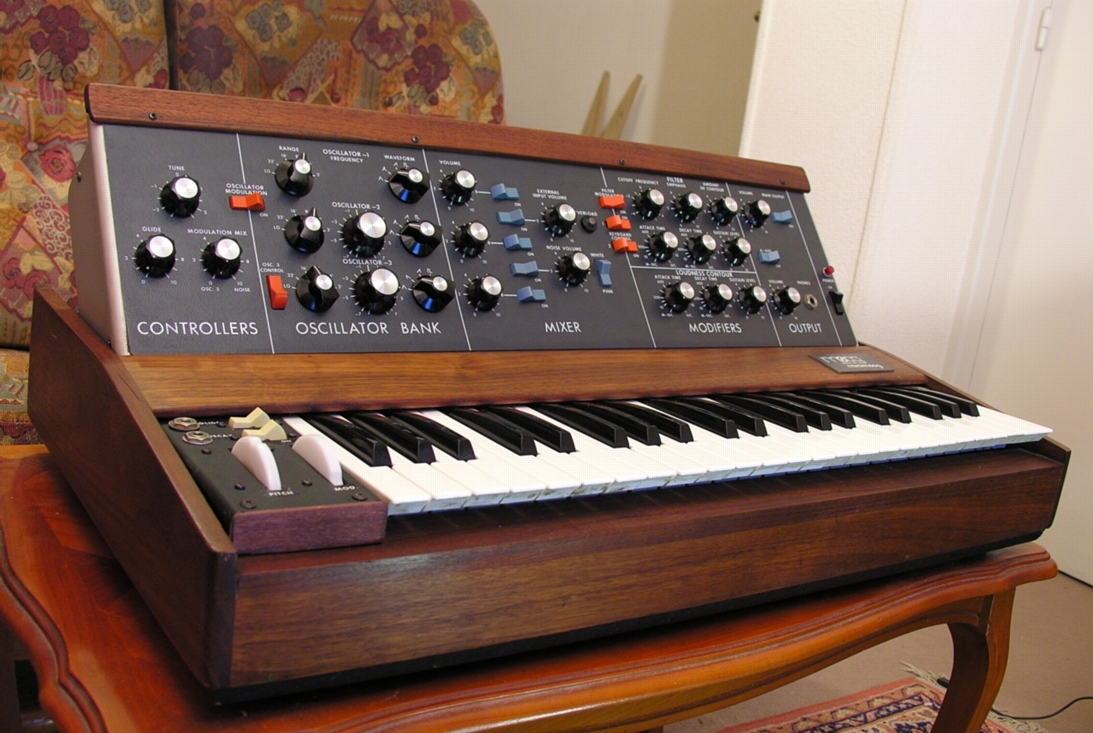via matrixsynth.
Here's a really good video that takes you through the basic waveforms available on a synth using both audio and visual media. It's useful as you get to see and hear the differences in the harmonic content of the waveforms. The video also gives a brief overview of the effect of filtering on the audio spectrum.
Visual Synthesis 1 from GM on Vimeo.
Showing posts with label synthesis. Show all posts
Showing posts with label synthesis. Show all posts
Thursday, 13 November 2008
Tuesday, 7 October 2008
Subtractive Synthesis Video
HowAudio.com have made one of their video tutorials on subtractive synthesis freely available on youtube.
The video deals with oscillators and waveforms, it explains the differences between each of the main waveshapes and their sound.
The video deals with oscillators and waveforms, it explains the differences between each of the main waveshapes and their sound.
Saturday, 13 September 2008
atomswarm
atomswarm is
"a framework for performance and composition, based on swarming behaviours similar to those seen in flocks of social animals. It can be thought of as a self-organising ecosystem, whose structure is internally regulated by limited resource availability and each agent's pursuit of internal homeostasis.
Sonic behaviours are determined by each agent's genetic disposition, the relationships between agents, and the population's continued evolution over time."
I saw a performance/demo of this software at a conference and was impressed. Whilst it can sometimes be hard to associate the onscreen movements with the generated sound, the majority of the time things do make sense. The output of the system looks and sounds very impressive.
At the website you can find links to video and audio as well as a description of the project along with examples of the code used.
The site also contains info on the developers other projects
Monday, 18 August 2008
how to program synths

synthtopia has posted a 20min video created by Ethan Winer which takes you through the basic components of analogue-style synthesisers and how to use these components to create various sounds.
The video is pretty good as it uses oscilloscopes to show yuo exactly what is happening to the sound as the various controls are moved around. The narration is also fairly well recorded and clear and easy to understand.
This would make a good introduction to synths for anyone new to the area.
How to program analog synthesizers from Ethan Winer on Vimeo.
MaxMSP article - LFO's

There is an article on the cycling74 website that explains how to set up a set of LFO's all of which run perfectly in sync with each other. The article also discusses other LFO related techniques such as recoginising when the waveform has restarted, summing all available waveforms together, etc...
There are example patches to download and experiemnt.
LFO's can be useful for creating rhythmical variations in your music/sounds.
edit:
The second installment in this series of articles is now available here. This article looks at using the LFO system created previously to actually drive parameters of a synth in order to produce sound.
edit:
The third installemnt in this series is now available here. This article introduces a few minor modification s that give the final patch more flexibility and variability. It also introduces some new objects that when used in conjunction with the [transport] object can be used to create time-specific changes within your patch.
The author also provides an .mp3 recording of his patch in action.
Thursday, 24 July 2008
Computer Music Tutorials

Computer Music has provided a bunch of their beginners guides.
There's stuff on synthesis, recordings, FX and various software packages.
Subscribe to:
Posts (Atom)
